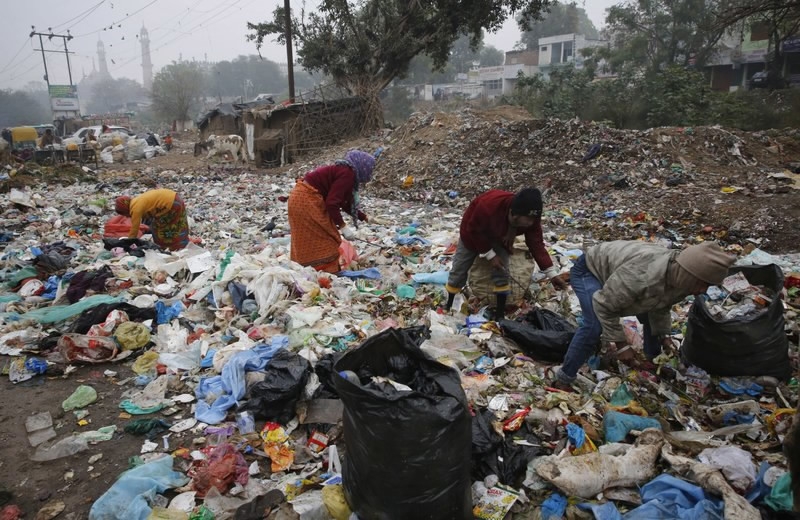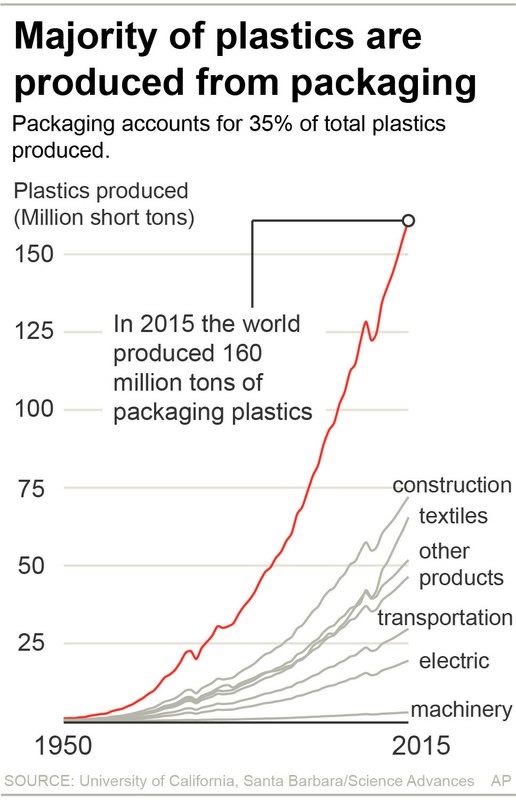
Tech & Sci
14:40, 20-Jul-2017
World's plastic waste could bury Manhattan 2 miles deep

Since 1950 more than 9.1 billion tons of plastic have been made. It doesn’t break down like other man-made materials, so three-quarters of plastic ends up as waste in landfills, littered on land and floating in oceans, lakes and rivers, according to the research reported in Wednesday’s journal Science Advances .
"At the current rate, we are really heading toward a plastic planet,” said the study's lead author Roland Geyer, an industrial ecologist at the University of California, Santa Barbara. “It is something we need to pay attention to.”

Indian rag pickers look for reusable materials at a garbage dump. /AP Photo
Indian rag pickers look for reusable materials at a garbage dump. /AP Photo
The plastics boom started after World War II, and now plastics are everywhere. They are used in packaging like plastic bottles and consumer goods like cellphones and refrigerators. They are in pipes and other construction material. They are in cars and clothing, usually as polyester.
The study's co-author Jenna Jambeck of the University of Georgia said the world first needs to know how much plastic waste there is worldwide before it can tackle the problem.
They calculated that of the 9.1 billion tons made, nearly seven billion tons are no longer used. Only nine percent got recycled and another 12 percent was incinerated, leaving 5.5 billion tons of plastic waste on land and in water.

AP Photo
AP Photo
Using the plastic industry's own data, Geyer, Jambeck and Kara Lavender Law found that the amount of plastic made and thrown out is accelerating. In 2015, the world created 448 million tons of plastic — more than twice as much as made in 1998.
"The growth is astonishing and it doesn’t look like it’s slowing down soon,” Geyer said.
About 35 percent of the plastic made is for packaging, like water bottles.
"Plastics are used because they are efficient, they are cost effective and they do their jobs,” said Steve Russell, vice president of plastics for the American Chemistry Council, an industry association that represents manufacturers. “And if we didn’t have them, the impact on the environment would be worse.”
Using alternatives to plastic for packaging and consumer goods such as glass, paper or aluminum requires more energy, Russell said.

AP Photo
AP Photo
"The fact that it becomes waste so quickly and that it’s persistent is why it’s piling up in the environment,” said Chelsea Rochman, a professor of ecology at the University of Toronto.
Plastic waste in water has been shown to harm more than 600 species of marine life, said Nancy Wallace, marine debris program director for the US National Oceanic Atmospheric Administration. Whales, sea turtles, dolphins, fish and sea birds are hurt or killed by it, she said.
"It’s a huge amount of material that we’re not doing anything about,” Wallace said. “We’re finding plastics everywhere.”
(Source: AP)

SITEMAP
Copyright © 2018 CGTN. Beijing ICP prepared NO.16065310-3
Copyright © 2018 CGTN. Beijing ICP prepared NO.16065310-3